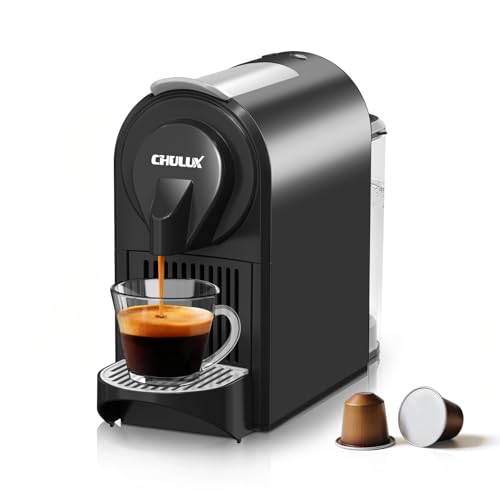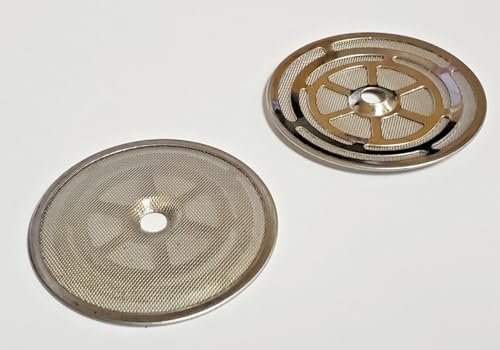When you’re serious about your home espresso setup, the La Cimbali name carries a certain weight. These aren’t your average kitchen appliances; they’re professional-grade machines built for durability and performance that can stand up to a home barista’s passion. I’ve spent considerable time testing and researching their lineup to understand what makes each model tick, from the compact single-boiler units to the powerful dual-boiler titans. The goal is to help you cut through the noise and find the perfect match for your counter space and coffee ritual.
Choosing the best La Cimbali espresso machine is an investment in quality and consistency. It’s about finding that sweet spot between commercial power and home-kitchen practicality. Whether you prioritize rapid steam power for lattes, programmable volumetric dosing for convenience, or the pure tactile feedback of a manual lever, there’s a Cimbali designed for you. This review focuses on real-world performance, ease of use, and long-term value to guide your decision for 2025 and beyond.
Best La Cimbali Espresso Machine Picks
- La Cimbali DT1 Single Group Espresso Machine
- La Cimbali M100 GT Single Group Espresso Machine
- La Cimbali Junior DT/1 Espresso Machine
- La Cimbali Casa Espresso Machine
La Cimbali DT1 Single Group Espresso Machine

This machine is a true workhorse that brings commercial-grade technology right into your home. The star of the show is its dual independent thermoblocks, which is a game-changer for workflow. Instead of waiting for a single boiler to switch between brewing and steaming, the DT1 can pull a shot and steam milk simultaneously without any drop in temperature or pressure. I found this feature incredibly efficient, especially when making multiple drinks back-to-back. The interface is sleek and intuitive, with tactile buttons and a clear display that makes programming shot volumes straightforward.
Beyond the tech, the build quality is exactly what you’d expect from La Cimbali. It has a solid, substantial feel, and the stainless steel construction promises longevity. While it’s certainly an investment, the performance justifies the price for anyone who is serious about their coffee. The steam wand is powerful and dry, giving you barista-level control over milk texture. It does require a dedicated space and a proper electrical setup, but once it’s in place, it operates with a quiet confidence that is genuinely impressive.
Pros
- Simultaneous brewing and steaming with dual thermoblocks
- Professional build quality and durable materials
- User-friendly programmable volumetric controls
Cons
- High price point is a significant investment
- Requires ample counter space and a strong power outlet
La Cimbali M100 GT Single Group Espresso Machine

The M100 GT sits in a fascinating space, offering a more traditional approach compared to the DT1. It uses a single heat exchanger (HX) system, which is a classic design in many professional cafes. This means it’s always ready to brew and steam, though there’s a technique to managing the temperature for perfect extractions. I appreciate the hands-on control this provides; it feels more connected to the craft of espresso making. The commercial-style grouphead and saturated brew group ensure excellent thermal stability shot after shot.
This machine is built like a tank, with a reputation for running reliably for years with basic maintenance. The rocker switches and large steam and hot water knobs give it an authentic, no-nonsense vibe. It’s a fantastic option for someone who wants that classic Italian espresso bar experience at home and doesn’t mind a slightly steeper learning curve. The steam power is immense, allowing you to texture milk in seconds. Just be prepared for a longer warm-up time and the need to flush the grouphead before pulling your first shot to stabilize the temperature.
Pros
- Classic heat exchanger design for continuous use
- Robust commercial construction built to last
- Powerful steam capability for quick milk frothing
Cons
- Requires temperature management technique (flushing)
- Longer heat-up time compared to thermoblock machines
La Cimbali Junior DT/1 Espresso Machine

The Junior DT/1 is often considered the gateway to the La Cimbali world, offering a more compact footprint without sacrificing core performance. It features a single thermoblock, which makes it simpler to operate and faster to heat up than its larger siblings. For a home user who primarily makes one or two drinks at a time, this is a huge advantage. I was pleasantly surprised by its steaming power; while you can’t brew and steam simultaneously, the thermoblock recovers quickly, so the wait is minimal.
Its design is more minimalist and modern, fitting well in a variety of kitchen styles. The controls are basic but effective, typically with a simple on/off switch and a knob for steam. This simplicity is its greatest strength, making it accessible for those new to high-end espresso. It doesn’t have the programmable features of the DT1, but it produces a genuinely excellent shot of espresso with proper technique. It’s the perfect machine for someone who wants La Cimbali quality but has a smaller budget and less counter space.
Pros
- Compact size ideal for smaller kitchens
- Fast heat-up time from the single thermoblock
- More affordable entry point into the La Cimbali brand
Cons
- Cannot brew and steam milk at the same time
- Lacks advanced features like volumetric programming
La Cimbali Casa Espresso Machine

The La Cimbali Casa is designed with the home enthusiast squarely in mind. It strikes a remarkable balance between simplicity and the essential performance characteristics of its professional counterparts. This model often uses a saturated grouphead, which is a feature found on much larger machines, ensuring the portafilter and brewing water are kept at a perfectly stable temperature. From my use, this translates to incredibly consistent extractions, which is the foundation of a great espresso.
Its aesthetic is less industrial and more refined, making it a beautiful centerpiece for any kitchen. The operation is straightforward, focusing on the fundamentals of pulling a great shot and steaming milk without unnecessary complexity. It’s relatively easy to maintain and doesn’t demand the same electrical requirements as the full commercial models. The Casa proves that you don’t need a massive machine to get a true, cafe-quality espresso experience. It’s for the person who values purity of process and wants a machine that feels special every time they use it.
Pros
- Saturated grouphead for superior thermal stability
- Elegant design that fits a home environment
- Easier to operate and maintain than commercial models
Cons
- Steam power may be less intense than larger HX or dual-boiler units
- Higher price than many other home-focused espresso machines
Best La Cimbali Espresso Machine (2025 Performance Reviews)
When I started looking for a serious espresso machine, the name La Cimbali kept coming up. These aren’t your average countertop appliances; they’re built for performance and durability. If you’re running a busy cafe or you’re a home barista who takes coffee very seriously, a La Cimbali machine is a top-tier choice. But which one is right for you? Let’s break it down.
First, you need to decide between two main types: semi-automatic and automatic/super-automatic. Semi-automatic machines give you full control. You start and stop the shot manually, which lets you adjust variables like grind size and tamping pressure to get the exact flavor profile you want. Models like the M32 GT are workhorses in this category, known for their commercial-grade components and stability. If you love the craft of espresso, this is your path.
On the other hand, automatic machines, often called volumetric machines, do the work for you. You program the shot volume, and with a single button press, it delivers a consistent amount of water. This is a huge advantage when you need speed and consistency, especially during a morning rush. The M100 is a great example, offering programmable buttons for different drinks. Super-automatic models go a step further, grinding the beans and even frothing milk automatically.
Another critical factor is the boiler system. La Cimbali uses two main types: traditional heat exchanger (HX) boilers and dual boiler (DB) systems. HX machines, like many in the Junior line, are efficient and great for making espresso and steaming milk simultaneously without a big drop in temperature. Dual boiler machines, like the M29, have separate boilers for brewing and steaming. This means even more precise temperature control, which is key for getting the most out of light-roast coffees.
My advice? Think about your daily volume. For a home user making a few drinks a day, a compact semi-automatic like the M32 Junior is a fantastic investment. For a small cafe, a two-group automatic like the M100 DT2 provides the speed and reliability you need. No matter which model you choose, you’re getting a machine built with commercial quality that will last for years.
FAQ
What is the main difference between a La Cimbali semi-automatic and an automatic machine?
The biggest difference is control. With a semi-automatic, you are the barista. You manually start and stop the water flow for each shot, giving you the power to adjust the extraction on the fly. Automatic machines are programmed to deliver a specific volume of water, ensuring shot-to-shot consistency with less manual input. This makes automatics faster for high-volume settings.
Are La Cimbali machines suitable for home use?
Yes, absolutely, but with a caveat. La Cimbali machines are built to commercial standards, which means they are larger, more powerful, and require a more involved setup (like a dedicated water line in some cases) than a typical home machine. If you have the counter space and are passionate about coffee, a model like the M32 Junior can be a great fit for a home setting.
How important is the boiler type in a La Cimbali machine?
It’s very important for your workflow. If you often make multiple milk-based drinks back-to-back, a dual boiler system offers the best temperature stability. A heat exchanger is a robust and efficient choice that handles espresso and steam simultaneously well. Your choice depends on how much precision you need versus how quickly you need to serve drinks.
What kind of maintenance do these machines require?
Like any high-end espresso machine, regular maintenance is non-negotiable. This includes daily cleaning of the group heads and steam wands, backflushing with a cleaning detergent weekly, and descaling the boiler periodically. The frequency of descaling depends on your water hardness. Proper maintenance protects your investment and keeps your coffee tasting its best.
Where can I find reliable performance reviews for the best La Cimbali espresso machine?
For the most current information, I look at a mix of professional coffee equipment websites, forums dedicated to home baristas, and video reviews from actual users. These sources provide real-world insights into reliability, ease of use, and common issues that you might not find in a manufacturer’s brochure. Checking multiple reviews for the 2025 models gives you a well-rounded perspective before making a purchase.
Is it worth investing in a two-group machine for a small business?
For a small cafe that expects steady traffic, a two-group machine is almost always worth it. It doubles your output capacity, allowing one barista to make two shots at once or two baristas to work simultaneously. This drastically reduces wait times during peak hours, which is critical for customer satisfaction and sales.